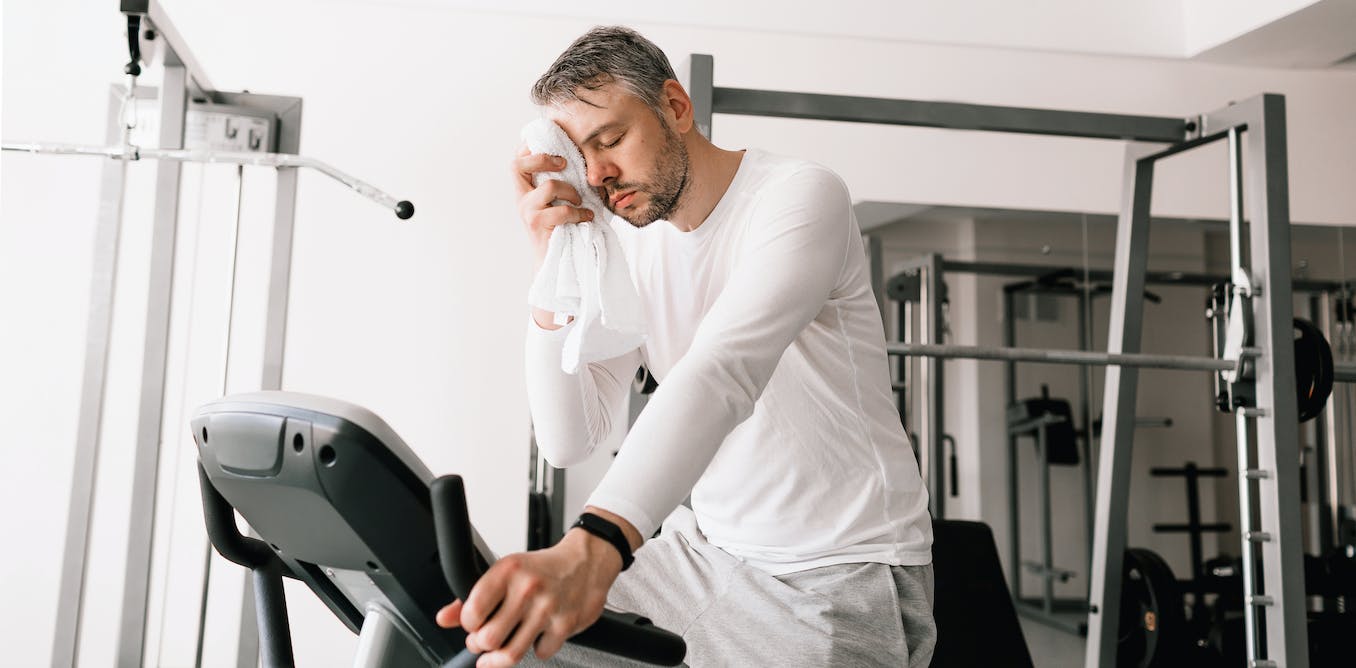It’s estimated around 3% of people in the UK experience long COVID – persistent, long-lasting symptoms after a COVID-19 infection.
Long COVID encompasses a range of health problems that can begin after even a mild COVID infection. Some of these symptoms include extreme fatigue, shortness of breath, muscle aches and loss of smell.
For around 50% of long COVID sufferers, their symptoms also fit criteria for a diagnosis of myalgic encephalomyelitis (ME), a neuro-immune disease characterised by depleted energy, muscle weakness and pain, cognitive dysfunction and dysautonomia (which affects blood pressure and heart rate).
A cardinal feature of ME is “post-exertional malaise” (PEM). This refers to a worsening of symptoms that takes place around 24-48 hours after any form of exertion – whether that’s physical, cognitive or emotional. PEM may take days or weeks to subside.
PEM remains one of the most debilitating yet least understood features of both ME and long COVID. But new research may point to a probable explanation for why physical activity in particular worsens long COVID symptoms. The study found that people with long COVID exhibit alterations in their muscle structure.
To conduct their study, the researchers analysed muscle biopsies and blood plasma samples taken from 25 people with long COVID and 21 people who had had COVID but didn’t have long COVID. Participants in both groups were around 41 years old, on average. There was a 48% to 52% split between men and women.
The blood and muscle samples were taken before and after a controlled cycling test. Participants cycled for approximately 15 minutes, starting slowly and gradually increasing in intensity.
During the cycling test, those with long COVID exhibited poorer muscular strength and had lower oxygen uptake compared with the healthy participants – despite putting in the same amount of effort. These results echo the findings of previous studies, suggesting people with long COVID have significantly reduced exercise capacity.
When the researchers analysed the muscle samples of the participants, they found that those with long COVID had a higher proportion of fast-twitch glycolytic muscle fibres. These muscle fibres can work at high intensity in short bursts, but are highly fatiguable because they have fewer mitochondria (organelles which provide cells with the energy they need to function properly).
The researchers then conducted further tests on the mitochondria in these fibres. They found that exercise lowered mitochondrial function in the long COVID sufferers – indicating that as well as having a reduced capacity for exercise, their muscle tissue had acquired damage during the exercise test.
Yurii Andreichyn/ Shutterstock
Tests on molecules in muscle and plasma also revealed that people with long COVID had lower levels of vital molecules required for glycolysis, the process mitochondria use to provide cells with energy.
This is not the first time that mitochondrial dysfunction has been implicated in an illness featuring PEM. In fact, this was first proposed as the underlying mechanism in ME more than 40 years ago.
If the mitochondria in muscles are dysfunctional, this means the muscle cells don’t produce enough energy to meet the body’s demands. This may explain why people with long COVID experience worse symptoms after exercise.
Muscle ‘microclots’
Next, the authors studied whether there were clumps of mis-folded proteins present in the muscle samples.
Previous studies have shown these clumps, termed “microclots”, are found at raised levels in the plasma of people with long COVID. It’s been proposed that microclots may block capillaries, causing damage as blood re-enters tissues. This may also cause damage to the mitochondria.
The authors showed that people with long COVID did indeed have more microclots in their muscles compared with the control samples. The number of microclots also increased after exercise in all participants. However, they did not find evidence that they were blocking capillaries.
Finally, they looked at which immune cells were present in muscle tissue. They found increased numbers of macrophages and T-cells, which both help with tissue repair, in the samples of those with long COVID – even before they exercised. This indicates that long COVID sufferers have locally activated immune cells in their muscle tissue as a response to tissue damage.
It’s known that mitochondria can cause and also be damaged by inflammation (which can be caused by an over-active immune system). This may be another reason why the mitochondria of long COVID sufferers are dysfunctional.
Targeting mitochondria
This study supports a growing body of research that has identified considerable abnormalities in the metabolic, muscular and immune function of people with long COVID (and, by extension, people with ME). It also suggests that targeting the mitochondria could help to improve symptoms.
Promisingly, many compounds have already been shown to positively affect mitochondrial function. Some of these are available without prescription, such as coenzyme Q10 (which our body naturally produces). But placebo-controlled trials will need to be carried out to see if these compounds have any effect on long COVID symptoms.
These findings also highlight how important it is to exercise caution when designing rehabilitation strategies for people with long COVID.
Traditional programmes work on the basis that gradual increases in effort and difficulty build resilience and exercise capacity. But for people with long COVID, the opposite is true.
This recent paper has now found why this may be the case, showing that for those with long COVID, pushing beyond their capabilities will provoke mitochondrial damage, reducing resilience and provoking a relapse of their condition. These findings are key when considering recommendations for rehabilitation or return to work strategies for long COVID sufferers.


